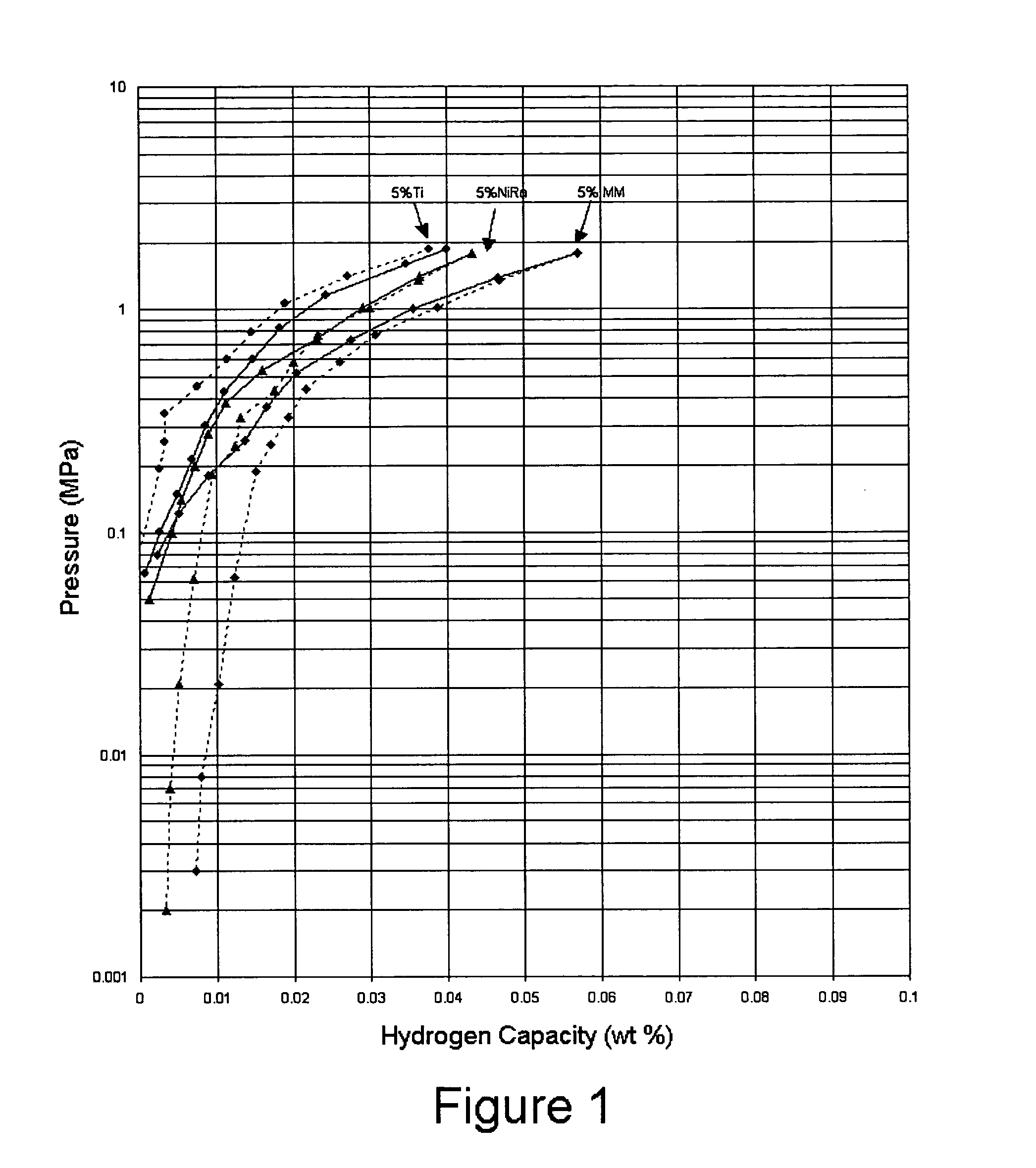High capacity hydrogen storage material based on catalyzed alanates
a hydrogen storage material and catalyzed alanate technology, applied in the field of alanates, can solve the problems of lack of acceptable lightweight hydrogen storage medium, high cost of hydrogen, and inability to meet the needs of hydrogen storage, etc., to achieve the effect of not reducing the hydrogen storage capacity of the alanate material, and increasing the kinetics of hydrogen absorption/desorption
- Summary
- Abstract
- Description
- Claims
- Application Information
AI Technical Summary
Benefits of technology
Problems solved by technology
Method used
Image
Examples
example
[0019] Samples of hydrogen storage materials in accordance with the present invention were prepared and tested for hydrogen storage capacities and kinetics of absorption and desorption at 30° C. The PCT measurements for the samples are shown in FIG. 1. The hydrogen storage materials were prepared by mechanically mixing 95 weight percent Na(AlH4) with 5 weight percent of a catalytic material. Samples were prepared using titanium (●), Raney nickel (▴), and misch metal (♦) as the catalytic material (absorption—solid line, desorption—dashed line). The materials including Raney nickel and misch metal demonstrated higher absorption capacities and higher reversible capacities as compared to the sample including titanium when all of the samples are prepared under the same conditions.
PUM
| Property | Measurement | Unit |
|---|---|---|
| Percent by mass | aaaaa | aaaaa |
| Percent by mass | aaaaa | aaaaa |
| Percent by mass | aaaaa | aaaaa |
Abstract
Description
Claims
Application Information
 Login to View More
Login to View More - R&D
- Intellectual Property
- Life Sciences
- Materials
- Tech Scout
- Unparalleled Data Quality
- Higher Quality Content
- 60% Fewer Hallucinations
Browse by: Latest US Patents, China's latest patents, Technical Efficacy Thesaurus, Application Domain, Technology Topic, Popular Technical Reports.
© 2025 PatSnap. All rights reserved.Legal|Privacy policy|Modern Slavery Act Transparency Statement|Sitemap|About US| Contact US: help@patsnap.com

